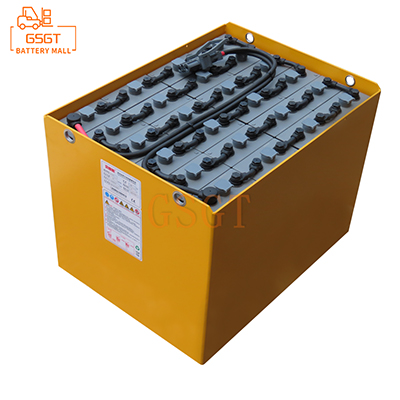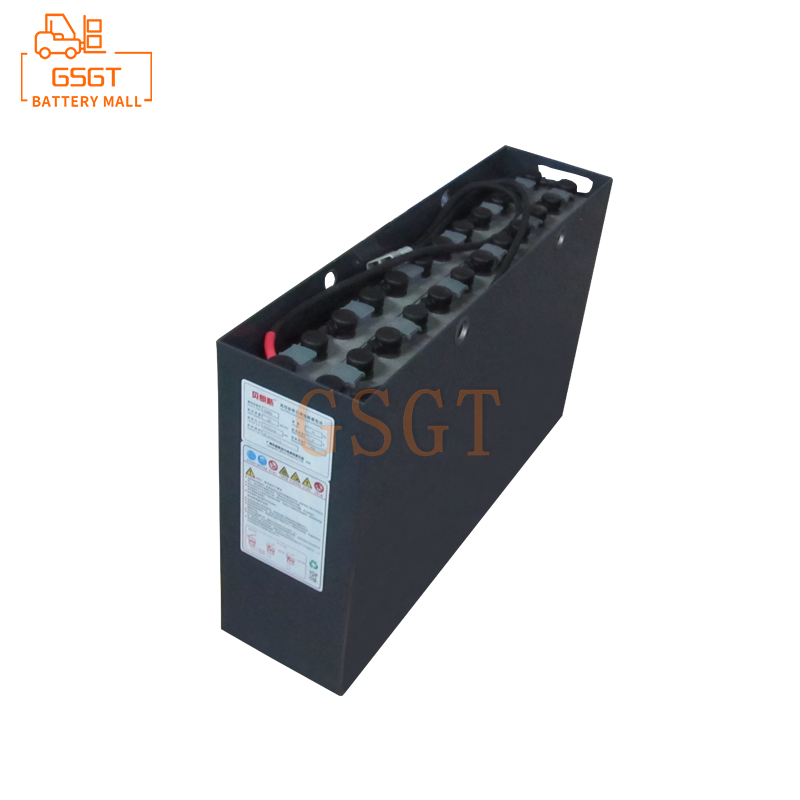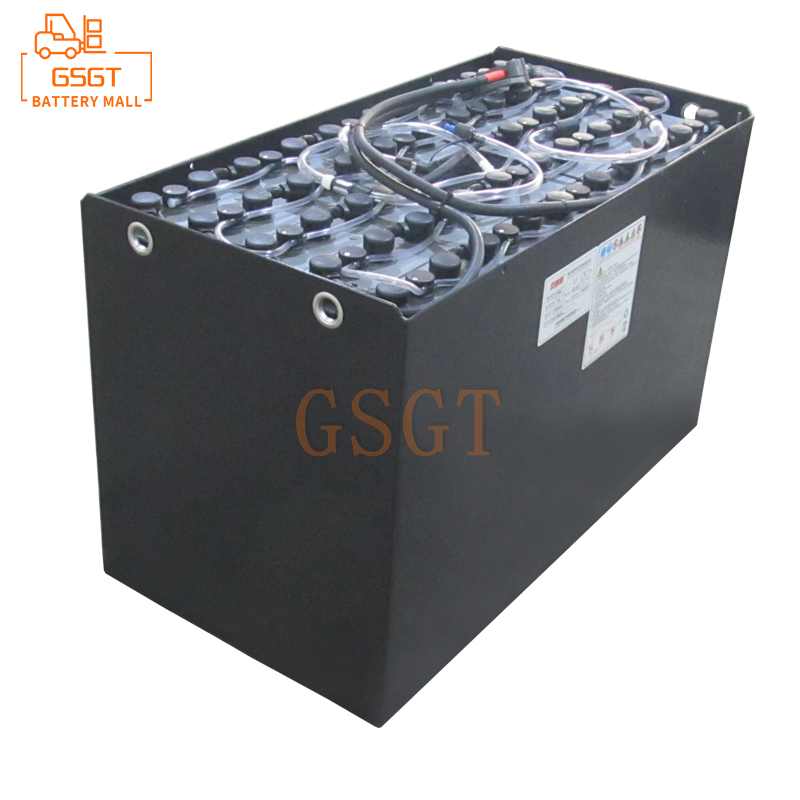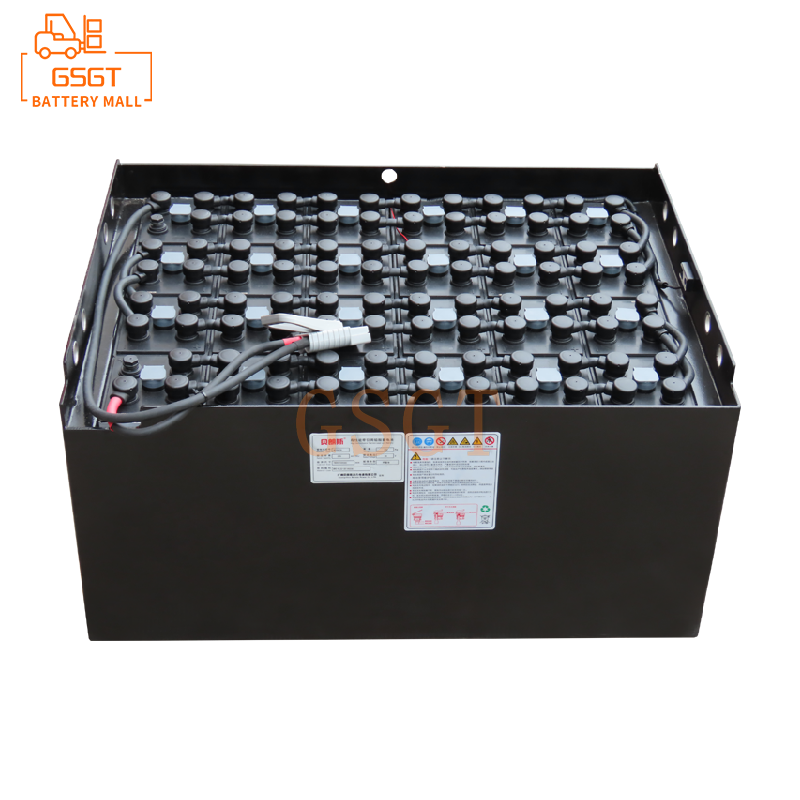Time:2025-06-11 16:33:42
Browse:602
In the modern logistics and warehousing field, forklifts, as indispensable handling equipment, the performance of their power core - lead-acid batteries - directly affects operational efficiency and operating costs. During the charging and discharging process of lead-acid batteries, the water in the electrolyte is constantly consumed, and the density of the electrolyte also changes accordingly. Therefore, reasonably determining the water addition cycle and accurately detecting the density of the electrolyte have become key links to ensure the performance of the battery and extend its service life. This article will deeply explore the determination method of the water addition cycle for forklift lead-acid batteries and the standard process for detecting the density of the electrolyte, providing practical technical references for relevant practitioners.
Water Consumption Mechanism of Forklift Lead-Acid Batteries
Reasons for water consumption
Electrolytic water reaction: In the later stage of charging, when the battery voltage reaches a certain level, a water electrolysis reaction will occur. Hydrogen and oxygen produced by water electrolysis escape from the battery interior, resulting in a continuous decrease in moisture.
Evaporation loss: During frequent operation of forklifts, the internal temperature of the battery rises, accelerating the evaporation of water. Especially in high-temperature environments or during long-term continuous operation, the evaporation rate of water significantly increases.
Self-discharge impact: Even when the forklift is idle, lead-acid batteries can still experience self-discharge, and this process will also consume the water in the electrolyte.
Method for Determining the water addition cycle of Forklift lead-acid batteries
Based on usage frequency and environmental conditions
Work intensity and frequency: For forklifts that operate frequently and are used for a long time every day, their battery charge and discharge cycles are many, and the water consumption rate is fast. Therefore, the water addition cycle should be relatively shortened. For instance, in large logistics warehouses, forklifts operate for more than 8 hours a day. It is recommended to check the electrolyte level every 7 to 10 days. If the level is below the standard line, distilled water should be replenished in a timely manner. For forklifts that are used less frequently and work for 3 to 4 hours a day, the water filling cycle can be extended to 15 to 20 days.
Ambient temperature: The ambient temperature has a significant impact on the evaporation of water from batteries and the rate of electrolytic water reactions. In high-temperature environments (such as when the summer temperature exceeds 35℃), the evaporation of water and the rate of electrolysis increase, and the water addition cycle should be shortened to 5-7 days. In a low-temperature environment (with winter temperatures below 0℃), although the rate of water consumption slows down, regular checks are still necessary. Generally, the water addition cycle can be set at 15 to 30 days.
Observe based on the liquid level of the electrolyte
Liquid level standard: Inside lead-acid batteries, there are liquid level scale lines, which are usually divided into the "highest liquid level line" and the "lowest liquid level line". Under normal circumstances, the electrolyte level should be maintained between the two scale lines. When the liquid level drops close to or below the minimum liquid level line, distilled water needs to be added.
Observation frequency: It is recommended to visually check the electrolyte level of the battery before each forklift operation. For newly put into use batteries or those that have been repaired, the frequency of observation should be increased even more to detect any abnormal conditions in a timely manner.
Combine the statistics of charge and discharge cycles
By recording the charge and discharge cycles of the lead-acid battery of the forklift, the water addition cycle can also be roughly determined. Generally speaking, a comprehensive inspection of the battery is required every 50 to 80 charge and discharge cycles, including the detection of the electrolyte level and density. If there are abnormal conditions such as overcharging or overdischarging during the charging and discharging process, the inspection and water addition cycle should be appropriately shortened.
Detection Process for Electrolyte Density of Forklift Lead-Acid Batteries
Preparations before testing
Tools and equipment: Prepare a hydrometer (commonly used ones include suction hydrometers), a thermometer, distilled water, rubber gloves, goggles and other tools and protective supplies. The hydrometer is used to measure the density of the electrolyte, and the thermometer is used to measure the temperature of the electrolyte. Since the density of the electrolyte changes with temperature, temperature correction is required.
Battery status confirmation: Ensure the battery is in a stable state and avoid conducting tests immediately after charging or discharging. It is generally recommended that the battery be left to stand for 1 to 2 hours after being fully charged until the electrolyte temperature drops to room temperature (around 25℃) before conducting the test. At this point, the measurement results will be the most accurate.
Testing Procedures
Sampling: Put on rubber gloves and goggles, and open the liquid injection hole cover on the battery. When using a suction hydrometer, insert the pipette into the liquid injection hole and slowly draw in an appropriate amount of electrolyte to allow the float of the hydrometer to float freely in the electrolyte. Be careful not to inhale too much electrolyte to avoid overflow and corrosion.
Measuring density: Place the hydrometer that sucks in the electrolyte vertically, observe the position where the scale line on the float is tangent to the bottom of the concave liquid surface of the electrolyte, and read the density value at this time. Meanwhile, use a thermometer to measure the temperature of the electrolyte and record it.
Temperature correction: As the density of the electrolyte is greatly affected by temperature, the standard temperature is 25℃. When the measured temperature is not 25℃, temperature correction is required.
Analysis and Processing of Test Results
Normal density range: For forklift lead-acid batteries, when fully charged, the density of the electrolyte is generally between 1.28g/cm³. If the test results are within the normal range, it indicates that the battery is in good condition. If it deviates from the normal range, further analysis of the cause and corresponding measures need to be taken.
Density exception handling:
Excessive density: If the density of the electrolyte is higher than 1.30g/cm³, it may be due to insufficient water replenishment or overly long charging time, resulting in an excessively high concentration of sulfuric acid. At this point, an appropriate amount of distilled water can be added to restore the density of the electrolyte to normal. After adding distilled water, the electrolyte should be thoroughly stirred to ensure uniform mixing and the density should be retested.
Low density: When the density of the electrolyte is lower than 1.15g/cm³, it may be caused by excessive battery discharge, electrolyte leakage or excessive water addition. If it is over-discharging, the battery should be charged in time. If the electrolyte leaks, the leakage point needs to be located and repaired. If the density is too low due to excessive water addition, the electrolyte density can be increased by appropriate charging to allow the water to evaporate. However, it is important to avoid overcharging.
Precautions for Water Addition and Electrolyte Density Testing
Water quality requirements: The added water must be distilled water or dedicated lead-acid battery replenishment fluid. It is strictly prohibited to use tap water or other water containing impurities. Minerals and impurities in tap water can contaminate the electrolyte, affect battery performance and even shorten battery life.
Operational safety: The electrolyte contains sulfuric acid, which is highly corrosive. When conducting water addition and density testing operations, be sure to wear rubber gloves and goggles properly to prevent the electrolyte from splashing onto the skin and eyes. In case of accidental contact with the electrolyte, rinse immediately with plenty of water and seek medical attention promptly.
Regular maintenance records: Establish a detailed battery maintenance record file, documenting the time of each water addition, the amount of water added, the test results of electrolyte density, and the charging and discharging conditions of the battery, etc. Through the analysis of these data, it is possible to better grasp the performance change trend of the battery, promptly identify potential problems and take preventive measures.
In conclusion, reasonably determining the water addition cycle of forklift lead-acid batteries and accurately detecting the density of the electrolyte are important measures to ensure the normal operation of the battery and extend its service life. Relevant operators should fully understand the working principle and maintenance points of the battery, strictly follow the standard procedures for operation, and keep good daily maintenance records. Only in this way can the lead-acid batteries of forklifts always maintain a good performance state, providing reliable power support for the efficient operation of logistics and warehousing operations.

$3405

$1060

$3050

$5710

MESSAGE
Professional And Efficient
Security
Affordable Price
Professional Services